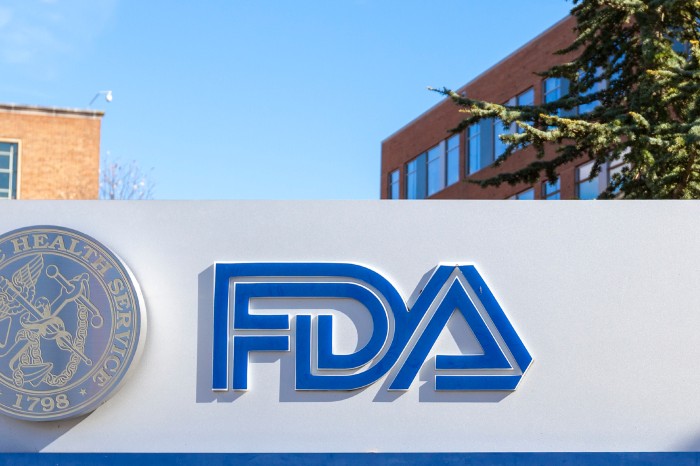The new article addresses the aspects related to special factors to be considered when developing a monitoring plan, the way centralized monitoring should be implemented, and also emphasizes the importance of maintaining blinding to mitigate risks associated with bias.

Table of Contents
The Food and Drug Administration (FDA or the Agency), the US regulating authority in the sphere of healthcare products, has published a guidance document dedicated to the application of a risk-based approach to monitoring clinical investigations. The guidance structured as a questions-and-answers document provides additional clarifications regarding the applicable regulatory requirements, as well as recommendations to be followed by medical device manufacturers and parties responsible for clinical trials (sponsors) to ensure compliance thereto. At the same time, provisions of the guidance are non-binding in their legal nature, nor are intended to introduce new rules or impose new obligations. Moreover, an alternative approach could be applied, provided such an approach is in line with existing legislation and has been agreed with the authority in advance.
Key Factors
The scope of the document covers, inter alia, the aspects related to specific factors to be taken into consideration when determining the timing, types, frequency, and extent of monitoring activities. Apart from the main factors described in the previous article, the document outlines additional factors, namely:
- Availability of the staff necessary to support an investigation. According to the guidance, this includes relevant study-specific training of site staff, the experience and qualifications of the research coordinator and specialized research professionals working with and under the direction of the clinical investigator, and turnover of personnel at the investigation site or among monitoring staff.
- Locations where the monitoring activities will take place. In this respect, the authority emphasizes the importance of paying special attention to situations when multiple locations are used, especially when some of such locations are remote from the investigator. The authority further states that the way the data is to be collected should be considered when developing a monitoring plan.
- Early monitoring visits or other early monitoring activities that could be beneficial. The FDA explains that by scheduling an early monitoring visit (for example, soon after the first few trial participants enroll in the investigation) or by carrying out other early monitoring activities, sponsors can help ensure early in the investigation that the protocol is being followed and procedures are being performed correctly at clinical sites. Apart from this, the said approach allows to identify and correct the issues in a timely manner, which could be especially important in the case of complex studies.
Centralized Monitoring
Another important concept addressed in the guidance is centralized monitoring. According to the document, centralized monitoring stands for a systematic analytical evaluation of a study conducted across multiple clinical sites, carried out by sponsor personnel or representatives (e.g., clinical monitors, data management personnel, or statisticians). As further explained by the authority, central monitoring allows the parties responsible for the clinical investigation to:
- Review study-wide data for inconsistencies or omissions;
- Perform activities such as data checks, for completeness and consistency;
- Verify source data;
- Ensure that the institutional review board and informed consent documents are current; and
- Determine which clinical sites need on-site review.
The authority mentions that implementation of the abovementioned approach is expected to improve the overall quality of the study since the sponsors will be able to aggregate and compare data collected from different sites, identifying potential anomalies in a timely manner. For instance, in such a way, parties responsible for clinical investigations will be able to identify any potential delays in entering the data or incomplete data provided by different investigation sites without the need for separate on-site monitoring. Should it appear that most of the issues identified are associated with a specific investigation site, a sponsor may decide to conduct a site visit and implement corrective actions.
Blinding
Under the general rule, blinding, an important concept related to clinical investigation, is applied to mitigate the risks associated with potential bias that could affect the accuracy and reliability of the study results. According to the guidance dedicated to risk-based monitoring, issued by the FDA earlier in 2013, for investigations that include blinding of interventions and/or outcome assessments, ensuring that the blinding of the investigation is maintained is a critical process that sponsors should consider in their risk assessment. The authority further explained that the general risks associated with blinding should be duly mitigated before the investigation will be commenced. Apart from that, study sponsors should identify and track deviations potentially resulting from issues related to blinding in the course of ongoing monitoring activities. As an example, the document describes a situation when it is reasonably necessary to disclose information about the use of the investigational product or placebo to some of the investigation staff – in such a case, the blinding for the remainder of the site staff should be retained.
It is also important to mention that Data Monitoring Committees (DMC) are entitled to access unblinded data in accordance with the respective charter. The authority refers to the appropriate guidance document dedicated to the matter for further details.
In summary, the present FDA guidance outlines certain specific aspects to be considered by the parties responsible for clinical investigations in order to ensure the accuracy and reliability of the results. The document describes in detail special factors to be taken into consideration when planning monitoring activities, explained the benefits of centralized monitoring, and also provides additional clarifications and recommendations on how blinding should be applied and maintained in order to prevent potential bias affecting study results.
How Can RegDesk Help?
RegDesk is a holistic Regulatory Information Management System that provides medical device and pharma companies with regulatory intelligence for over 120 markets worldwide. It can help you prepare and publish global applications, manage standards, run change assessments, and obtain real-time alerts on regulatory changes through a centralized platform. Our clients also have access to our network of over 4000 compliance experts worldwide to obtain verification on critical questions. Global expansion has never been this simple.


